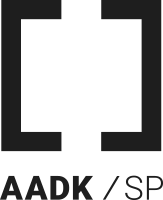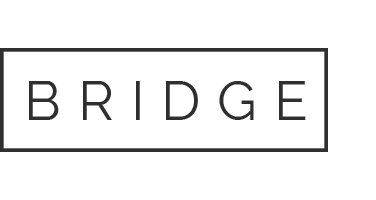Memoria del Cuerpo y del Territorio hosts a series of research and creation projects, with an ecofeminist perspective, which aim is to generate a space for the exchange of knowledge and to value the potential of rural environments in the current global context. Our intention is to promote these territories as new poles of artistic creation in order to contribute positively and respectfully to their development.
The artists were selected through a public call for applications and each had a month’s residency to develop their projects.
In addition, a series of talks open to the public were held with the participation of relevant people – thinkers, activists and theoreticians – who delved into the themes and practices addressed by this initiative.
Taller de Reparación y Cuidados / Artist Kokoa K
Taller de Reparación y Cuidados is a project carried out by the artist Kokoa K together with a group of children of different ages. During the development of the project, a series of meetings took place in a laboratory-workshop format in which they worked on the repair, modification and care of personal objects.
BIO
Kokoa K is a non-binary queer artist, architect and object maker. They work in the mediums of painting and installation. For 5 years, together with Susana Ernst, they runs a series of workshops for children within the framework of various initiatives, including the Kinder Universität in Vienna and Brunnen Passage, they ran workshops for children within the framework of various initiatives, including the Kinder Universität in Vienna and Brunnen Passage.
More about this artist:
IG
Ana Ausín's Conference

Ana Ausín was the second expert invited to the series of open talks. Ausín coordinates projects to transform educational spaces in schools and colleges into natural play and learning scenarios – classroom space and playground space. Artist and mediator, she shared her collaborative practices developed with children in the framework of the Planea Network, which incorporates artistic practice within partner schools to develop tools for self-management and environmental awareness.
More info:
Jabal al Nour - Montaña de Luz / Artist Irene Trapote
The Jabal al Nour / Montaña de Luz project, created by Irene Trapote together with a team of young people, is a collective intervention carried out on a disused site where a space for meeting and community use was built. For its development, materials based on vernacular architecture and bio-construction were used, prioritising natural and recycled materials. The main intention of this proposal is to make visible and recover rural community spaces, which allowed people to self-manage and organise themselves in collective ways in accordance with their ways of life and with the territory and the natural resources they had to manage.
BIO
Irene Trapote‘s proposals start from the territory and the relationship of bodies with it, exploring the communication between culture and environment, and tend to focus on territorial management, the present civilisational and eco-social crisis, situated knowledge, knowledge of the environment and the search for autonomy. Her works use audiovisual, performance, collective practice, textile art, or intervention in the environment, among other media.
More info about this artist:
Thomas Engelbert's Conference

The first meeting of the open lecture series opened with Thomas Engelbert (Germany), who has been working with anarchitectures and botanical art for decades. Thomas has served as exhibition director, technical director, specialist for new art commissions, production coordinator for the European Manifesta Biennial and, most recently, for Documenta 15 in Kassel, Germany – the world’s largest non-commercial contemporary art event.
For Documenta 15 the Indonesian art collective Ruangrupa proposed to develop the project following the concept of the “lumbung” – a collective granary, common in many Indonesian communities – as a symbol to show how social, collaborative and collective practices and efforts enhance individual, environmental and general public well-being. Engelbert shared his impressions of this work and his first-hand experiences.
More info:
Laboratorio de Imagen y Memoria / Artist Silvia Ayerra
Laboratorio de Imagen y Memoria is a project carried out by the artists Silvia and Susana together with a group of neighbours from Blanca. Their proposal was based on the development of a participatory creation laboratory for the recovery of the domestic memory of the town. Based on the family album and personal archives, a collective work was created in the public space, combining large-format images and audios with the stories of the protagonists. The result was exhibited in the form of a street installation, thus closing the circle of creation by transforming the domestic images into a public story to which to pay tribute.
BIO
Silvia Ayerra is a photographer and visual artist, specialising in Visual Pedagogy, Therapeutic Image and Feminist Image. She designs and coordinates intervention processes through photography. Creator of the workshops “Image Laboratory: Hacking Art History”, on the representation of women throughout history in different visual media.
More info about this artist:
Marta Peirano's Conference

Marta Peirano is a journalist, curator and writer, columnist for El País and RNE. She has been founder of Hack Hackers and Copyfight Berlin, co-director of Copyfight, head of Culture at ADN. Peirano is assistant to the editor at eldiario.es, technology curator at the Bienal del Pensamiento de Barcelona and member of the working group for cyberdefence at CESEDEN. She directs (re)programming – Strategies for Self-Renewal, a talk show on technology and climate change at the Institute of Contemporary Art in Ljubljana and Periodismo Profundo, a seminar on new journalism at Medialab-Matadero (Madrid).
Her latest book is Contra el futuro (Debate, 2022), a critical analysis of climate technologies and apocalyptic narratives. Previously she published El enemigo conoce el sistema (Debate, 2019), an essay on platform capitalism chosen by the NY Times as one of the two best essays published in Spanish.
Todo lo que crece / Artist Marco Ranieri
Todo lo que crece is a project set up by Marco Ranieri together with the neighbourhood community of the town of Blanca. The work focuses on the local flora and the situated, traditional and subaltern knowledge linked to it. A series of meetings were held with neighbours of all ages, with the aim of identifying the most significant plants of the Ricote Valley and recovering community knowledge about their different uses. Particularly those plants that can be used for dyeing purposes were identified and used to dye long canvases that formed an artistic installation in the natural environment and in the public washing place of the village of Blanca. The project explores local biodiversity and botanical-affective-emotional links.
BIO
Marco Ranieri is an artist, artivist, independent researcher and associate professor at the Faculty of Fine Arts of the UPV. He develops his artistic activity at national and international level, involved in contemporary creation projects in museums, creation centres, public institutions and private entities. As an artist, he focuses his sculptural, performative and relational work on transforming the experience of the territory into art, forging alliances with partner species and collaborating agents such as insects, birds, plants, ferments, lichens and bacterial communities.
More info about this artist:
Verónica Perales's Conference

Verónica Perales is a lecturer in Fine Arts at the University of Murcia, hypermedia artist and researcher. She holds a PhD in Fine Arts from the University of Castilla-La Mancha. In 2001, together with Fred Adam and Andy Deck, she founded the collective TRANSNATIONAL TEMPS www.transnationaltemps.net; the common thread of their projects is respect for the biosphere as a living organism and the use of technological advances to promote knowledge of the natural environment. His publications include: “ArTecnología 2012. Digital Culture in the Transmedia Museum”, “The Message Is the Medium: Ecology, Mobility and Emergent Storytelling” and “Experimenting with Locative Media Games and storytelling in Fine Arts”. The constant presence in her work of the themes of the recognition of animal individuality, environmental degradation and climate change make her a representative of ecofeminist art. Her artistic work is characterised by approaches that hybridise traditional techniques and emerging technologies, aiming at transmedia formats.
Funded by the European Union Next Generation EU, through the Institute of Cultural Industries and Arts, through the Grants to Expand and Diversify the Cultural Offer in Non-Urban Areas.












































